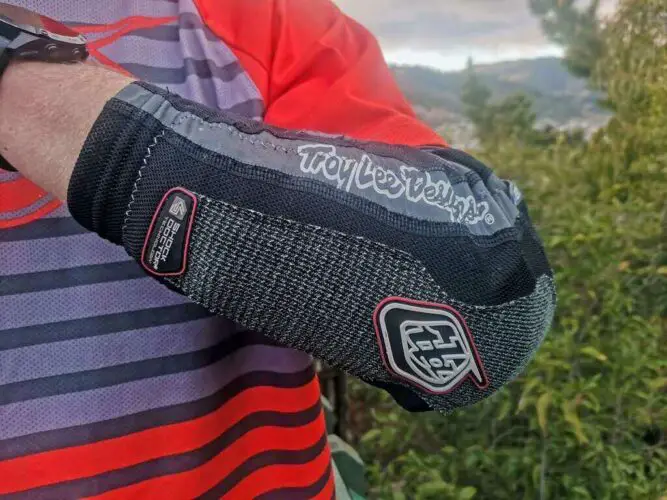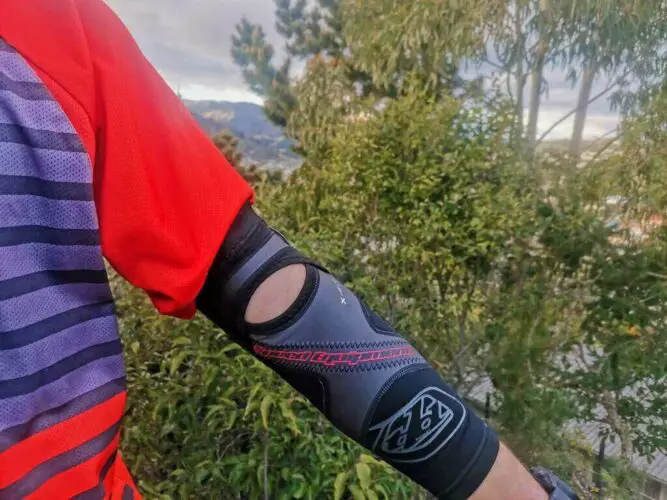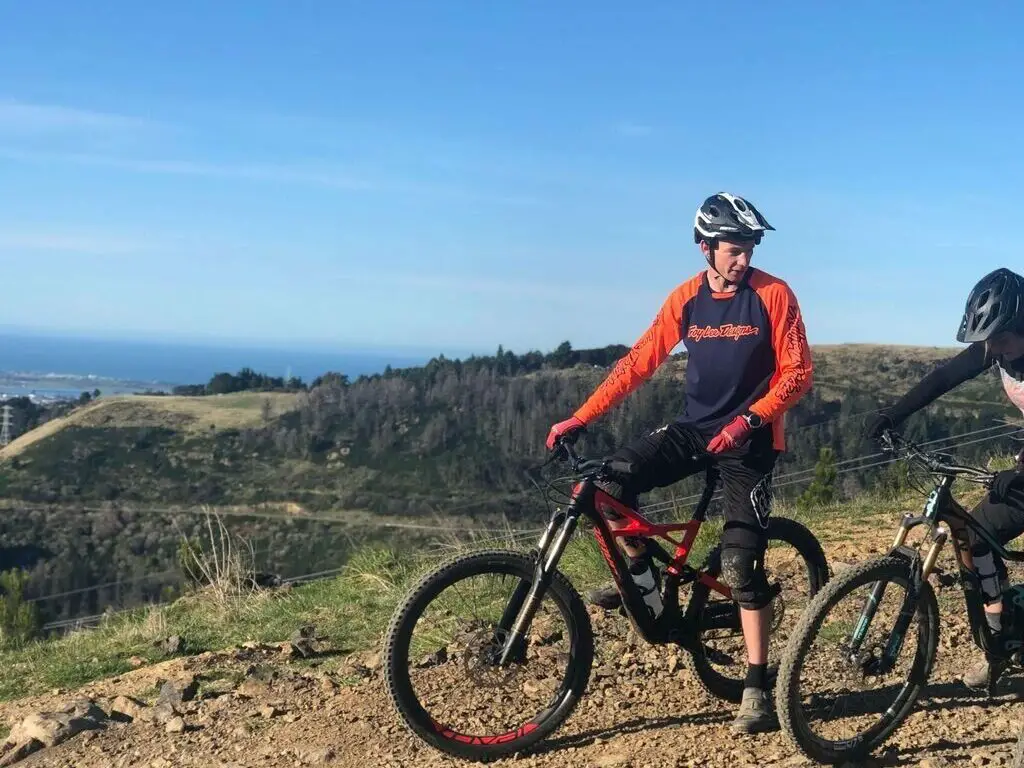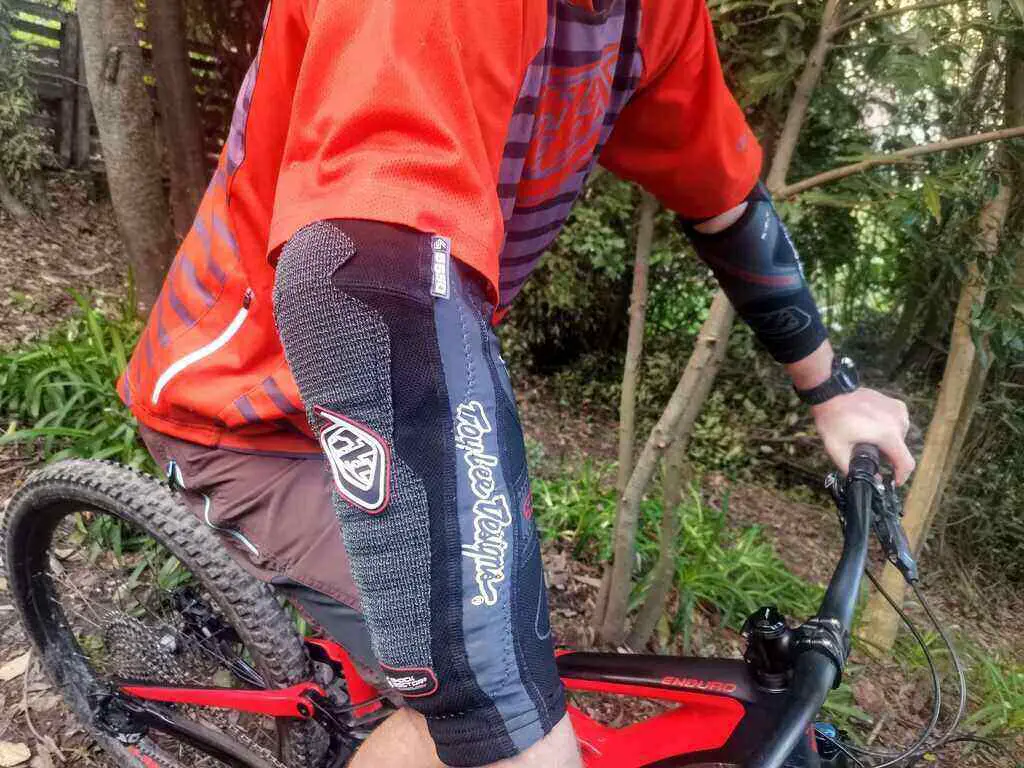Elbow pads are often neglected by mountain bikers, which is very unfortunate given a knock to the elbow can set you back just as much as a knock to the knee. This article will give you a thorough look at how to choose MTB elbow pads, so you can get riding with confidence.
Mountain bike elbow pads have come a long way in the past decade or so. Long gone are the days of hard plastic shells keeping your elbows rigid and uncomfortable. These days elbow pads are flexible and move with you, and harden on impact.
Not only are they much more comfortable, but they are also a whole lot more protective! Technology advancements mean riders are better protected in crashes without having a heap more material to keep them covered.
How to Choose mountain bike elbow pads?
There are a few key characteristics between elbow pads which we will look into below. Note that the pad is the thick piece of armor or guard, and the sleeve is the rest of the material keeping the pad on your arm.
Padding Material
The padding material correlates to ‘bulkiness’ and determines how protective the pad is.
Some elbow pads have a plastic outer shell as well as an inner pad. This makes it a bit bulkier but increases the protection from hard knocks and impacts. While these are more protective, they are a bit harder to ride in, so they tend to be aimed at downhill riders as opposed to cross country or enduro riders.
A common material you will come across is D3O. D3O is a shock-absorbing material that hardens on impact. This allows it to be thin, flexible and comfortable to wear, but it is also able to absorb large impacts when needed.

Other materials you may come across include Poron XRD, VPD (patented by POC), and many others. Each of these has the same concept of hardening on impact but is flexible during use.
Some knee pads just use a bit of foam. The foam can be used in conjunction with an impact protection guard, or on its own. Elbow guards such as the Fox Launch D3O uses foam around the outside to prevent knocks to the sides of the elbow, while other pads use a bit of foam behind the impact protection guard. Having this little extra foam means you have a softer landing once the D3O (or similar) material hardens!
Elbow pads made just of foam are sufficient for knocks on the dirt or stopping abrasions on harder terrain. However, if you happen to strike a rock as you fall, it is likely you will still be able to feel the rock through the foam pads.
Length
The length of the sleeve clearly determines how much protection the sleeve offers. Some pads will cover the forearm up towards the shoulder, while others simply cover the elbow and a few inches on either side.
The padding on these sleeves won’t cover the whole area- hence you need to consider the ‘sleeve’ length and the pad length. Some sleeves will have padding that covers down to the forearms as well as the elbow, while others will just cover the elbow.
Sleeve Material
The sleeve material will determine how breathable the elbow sleeve is. If you generally ride in warm conditions, pay particular attention to cutouts in the sleeve, perforated pads, and thinner materials that allow a bit more air through.

Sleeve material will also determine the durability of the mountain bike elbow pad. Perforated neoprene, which is a thicker material, may mean it is less breathable than thinner sleeves but it is a super durable material. Perforated neoprene has the added benefit of protecting your skin from abrasions too, while a thinner material may not stop sticks or rocks from getting to your skin as easily.
Other Aspects to Consider
How does it stay up?
Velcro, elastic or silicon grippers are the most common fasteners. Velcro straps are used for bulkier pads and are the strongest way of holding the pads in place during a crash. They also offer the most flexibility in fit as you can tighten or loosen the velcro strap as needed. However, they can rub or cause discomfort on the skin for some people.
Elastics are common for the thinner, less protective pads. They may slide down the arm easier if the fit isn’t right, or in a fast and hard crash. Elastics can also be too tight and cause discomfort while riding if they don’t fit correctly. Basically, make sure the sleeve fits well as you don’t want it too tight or too loose!
Silicon grips prevent the sleeve from sliding down while riding, but won’t stop the pads from sliding in a crash. They are the most comfortable for long rides, as long as you make sure it is a snug fit (not too tight, not too loose!).
What is the Intended Use?
Elbow pads, similar to knee pads, have intended users. A downhill rider, who takes a chairlift or shuttle to the top of the park, won’t mind sacrificing breathability for maximum protection. Hence the bulkier, thicker pads that can take a lot of force are intended for the downhill rider.
Less bulky, very lightweight pads are usually aimed at cross-country and all-day riders. These riders don’t come off very often, or they aren’t tackling gnarly, steep, rock drops at high speeds, but they still want a bit of protection.
In-between pads are aimed at your casual trail rider, through to enduro riders. Elbow pads that have a good balance between comfort and protection are popular for the majority of riders. Having a lightweight pad is usually pretty important for the majority of riders too.
Price
As you would expect, the more technology involved in the pads the higher the price. As D3O material has become more common, the price has dropped, making D3O a very affordable, protective material.
Less protective pads are generally cheaper, as they require a bit less technology and design.
Bit of Technical stuff about the Elbow
The elbow is a fragile part of your body that can suffer many injuries. It is a complex joint, connecting the radius, ulna and humorous which are connected by a number of tendons and ligaments. These work in conjunction to close and straighten your arm to 180 degrees.
There are 23 muscles that are connected to the elbow directly which allow the hand and wrist to perform precise, technical motions. This essentially allows us to keep control of our mountain bikes!
Damaging our elbows can put us out of riding for significant portions of time, so it always pays to keep the elbows protected.
What Should I Buy?
If you mainly do downhill riding- chair lift or shuttle laps and don’t mind too much about ventilation- you want to go for a bulkier elbow guard, that ideally covers the forearms, and has velcro straps. See here for the best elbow guards for downhill mountain bikers.
If you do a lot of long-distance riding or a fair bit of hill climbing and want a little more elbow protection just in case, you want something light and breathable.
Protective gear is pretty essential on the trails these days. Particularly as the trails get harder and faster as mountain bikers get better and better! Elbow pads are becoming more essential in riders’ protective gear inventory, alongside knee pads and helmets.

For information on the best mountain bike knee pads, see here.
